
Invisalign® has changed how many people approach orthodontic care: it offers a discreet, removable alternative that fits into modern lives without the look or constraints of traditional braces. Using precise digital planning and a series of clear, custom-made aligners, this method steadily guides teeth into healthier, more balanced positions while preserving daily routines and oral hygiene habits.
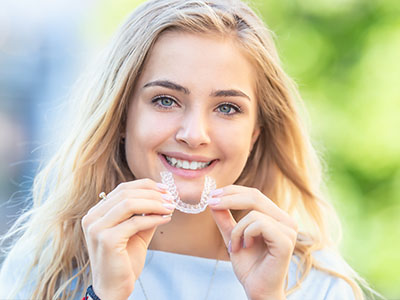
Invisalign® for Teens

Invisalign® for Brides

Invisalign® for Travelers
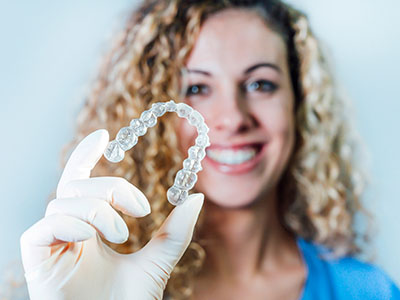
Before & After Photos
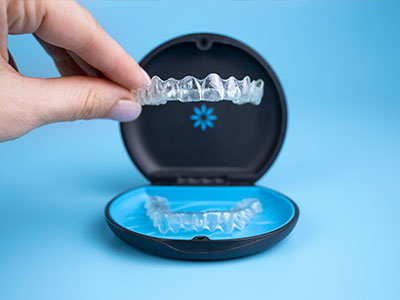
Invisalign® Videos
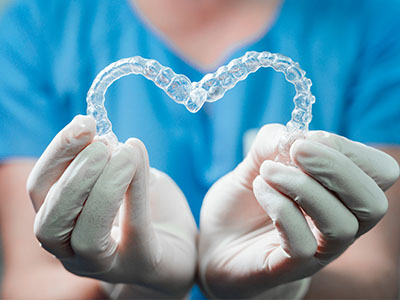
FAQs
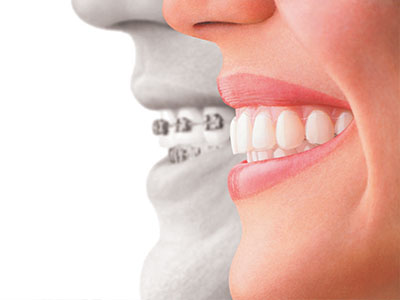
Invisalign® vs Braces
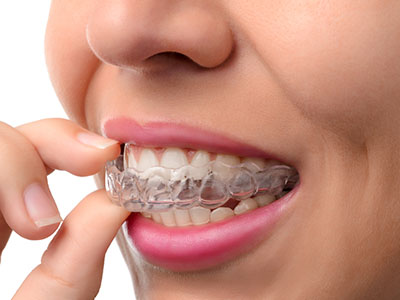
Invisalign® vs Direct-To-Consumer Aligners
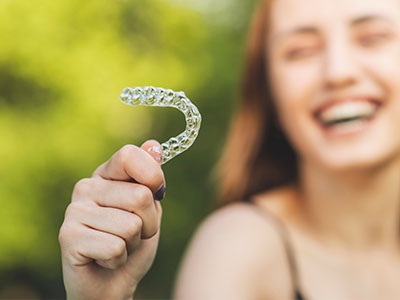
Is Invisalign® Right For Me?
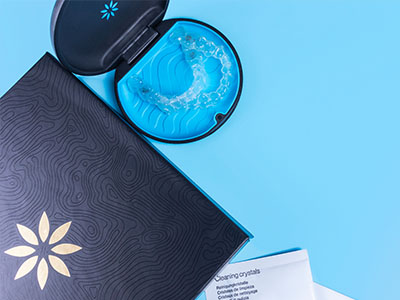
Invisalign® Costs
Clear aligners are designed to be nearly invisible when worn, which makes them an appealing choice for adults and image-conscious teens who want orthodontic improvements without obvious metal hardware. Their transparent material and slim profile mean social and professional interactions can continue without the visual interruption of brackets and wires.
Beyond aesthetics, the aligner approach uses incremental, measured movements planned in advance. Each tray applies gentle, focused pressure to select teeth, allowing complex corrections to be broken into predictable steps rather than relying on constant adjustments of wire tension.
The removability of aligners offers practical advantages: eating, cleaning, and important life events can proceed without modification to the appliance. That flexibility encourages better oral hygiene throughout treatment, because patients can brush and floss normally between wearing cycles.
The foundation of reliable clear-aligner care is precise imaging. A fast digital scan captures the current position of each tooth and the relationship between upper and lower arches. These data replace traditional impressions and make it possible to plan every stage of tooth movement virtually before treatment begins.
From this digital model, clinicians map a stepwise progression—often visualized as a preview—that shows how the smile will evolve. The entire series of aligners is fabricated to follow that plan, which helps the clinician track progress and make adjustments when necessary during checkups.
Small refinements, like attachment placement or slight contouring of tooth surfaces, can improve control for specific movements. Those technical details are planned in the digital phase and then translated into each successive aligner to achieve more predictable outcomes.
Clear aligners address a broad range of alignment concerns, from minor crowding and spacing to some bite irregularities. They are commonly used by adults and teens whose growth is nearing completion and who want a less conspicuous treatment option. Good candidates are motivated to wear their aligners consistently and to follow recommended care instructions.
For more complex skeletal discrepancies or certain severe bite problems, traditional orthodontic methods or interdisciplinary care may be recommended. A consultation and clinical exam determine whether clear aligners alone are suitable or if additional measures—such as attachments, auxiliaries, or combined therapies—will be needed to reach the desired result.
Age alone is not an absolute barrier; what matters most is oral health and consistent wear. Healthy gums and teeth form the best foundation for movement, so any active periodontal issues or untreated decay are typically addressed prior to beginning aligner therapy.
Your initial visit is an opportunity to review goals and to establish a clear, clinical plan tailored to your smile. After a clinical examination and digital scan, your clinician will walk you through the proposed treatment path and show a preview of expected tooth movement. This stage ensures the plan aligns with your expectations and clinical objectives.
Once your custom aligners are fabricated, your first fitting session focuses on fit and comfort. The clinician will explain wear schedules—typically most of the day and night—how to switch trays, and what symptoms of normal adjustment to expect. Regular monitoring visits allow the team to assess progress and to deliver the next sets of aligners as scheduled.
Throughout treatment, patients are encouraged to maintain routine dental care. Because aligners are removable, cleanings and hygiene practices are easier to perform than with fixed braces. The clinical team will also advise on best practices for cleaning trays and protecting oral health during the active phase of movement.
Successful results depend on consistent wear and attentive care. Aligners should be removed for meals and cleaned according to the clinician’s instructions; teeth should be brushed before reinserting trays to avoid trapping food particles. When not in use, aligners should be stored in their case to prevent damage or loss.
Travel-friendly by design, aligners allow patients to maintain treatment on the go. Planning ahead for routine checkups and bringing a small hygiene kit for brushing on long days helps keep progress on track. If an aligner is lost or damaged, contacting the practice promptly ensures continuity.
After active alignment, retention is the final step to preserve tooth position. A retainer—custom-designed to each patient—helps stabilize the result while surrounding tissues adapt. Following the retention protocol recommended by your clinician maximizes the longevity of your new alignment.

Begin with an exam to review your concerns and to determine whether clear aligners are a good fit for your goals and oral health. The consultation is an opportunity to ask questions and see a visual plan of treatment options.
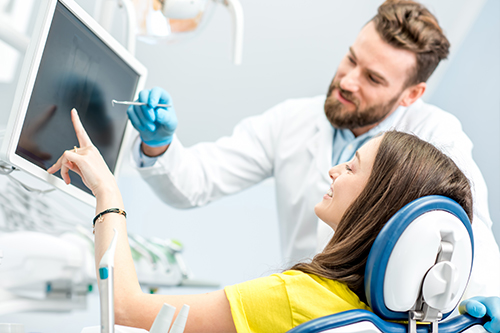
Modern intraoral scanners capture detailed 3-D models in minutes. These images let your clinician create a treatment roadmap and share a preview so you can understand the intended progression of your smile.
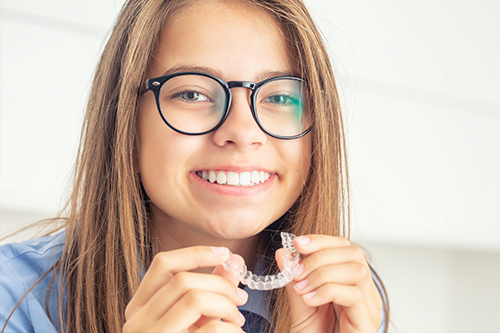
Each tray is manufactured to precise specifications to move teeth gradually and comfortably. Aligners are shaped and trimmed for a snug fit, and optional attachments are discreetly placed when additional control is required.

From your first set through the final tray, your clinical team will outline a clear schedule and provide tips for care, habit formation, and troubleshooting common questions that arise during treatment.
*Invisalign® is a registered trademark of Align Technology, Inc.
At Saugeen Shores Family Dentistry, our goal is to provide modern, evidence-based orthodontic options that fit real lives. If you’re curious whether clear aligners could help you reach your smile goals, contact us for more information and to arrange a consultation.
There are many options for patients who want to avoid metal braces! The most popular alternative orthodontic treatment is Invisalign®, which are clear plastic aligners designed to straighten teeth. After an examination of your teeth, your dentist will determine which option is best suited to your wants and needs.
According to the Invisalign® website, the cost for treatment is approximately the same as the cost for metal braces. A portion of this cost may be covered by your insurance. Please call us to set up a consultation and discuss potential payment plan options.
The first step is to schedule a consultation with your doctor, so they can devise a treatment plan that is best suited to your individual dental needs. Once approved, you will receive your first set of aligners. Your doctor will then regularly monitor the movement of your teeth and new aligners will be ordered according to the progress made in your treatment plan.
Invisalign® aligners are made of clear, flexible plastic. The company received a patent for this material – SmartTrack® – to be used exclusively for Invisalign treatment purposes. These aligners are FDA approved and nearly invisible!
Your doctor will give you an estimate regarding how long your Invisalign® treatment should take, which will depend on your specific needs. The average length of time for treatment is approximately 12-18 months. However, some patients may see results far sooner. Remember to wear your aligners exactly as instructed by your doctor to obtain the best results.
Your doctor will most likely recommend that you wear retainers following your Invisalign® treatment. This is a precaution that will prevent your teeth from shifting back to their original positioning. It is important to follow your doctor's instructions exactly to ensure long-lasting results.
You must wear your aligners for up to 22 hours daily. You may remove them for eating, drinking and regular oral hygiene.
No. Unlike braces, you may eat whatever you like as long as you remove the aligners before eating. Prior to placing the aligners back on, it is important to brush your teeth and the aligners after you eat.
Like any orthodontic treatment, there is a short adjustment period. The more you speak with the aligners on, the quicker you will adjust.
There will be some pressure and minor discomfort for a day or two after each initial insertion. This is a sign that your teeth are moving sequentially into their final position.
It is recommended that you remove your aligners prior to chewing gum as the gum will stick to the aligners.
We discourage smoking with aligners as the cigarette smoke will tend to discolor them.
Brushing them with toothpaste will keep them fresh and clean.
Regular office visits are every five to six weeks. This will ensure that your Invisalign treatment is progressing as planned.
All orthodontic patients are instructed to wear their retainers at night indefinitely. Sleeping with your retainers in at night will ensure a healthy bite and maintain the new position of your teeth.
Yes, if their teeth, including second molars, have grown in completely.
Invisalign is a clear aligner system that straightens teeth using a series of custom-made, removable trays. Each aligner is created from a 3-D digital scan of your teeth and is designed to move specific teeth a small amount before you switch to the next tray. Over time, the sequence of aligners gradually guides teeth into their planned positions according to a personalized treatment plan.
The treatment plan is developed using advanced imaging and software that map the entire movement of your teeth from start to finish. Patients typically wear each set of aligners for a prescribed period, and periodic checkups let the dentist monitor progress and make adjustments if needed. Because the aligners are removable, they allow normal brushing and flossing and fewer dietary restrictions than fixed braces.
Good candidates for Invisalign include teens and adults with mild to moderate alignment issues such as crowding, spacing, and many bite irregularities. Complex skeletal problems or severe malocclusions may require additional orthodontic or surgical approaches, so a clinical evaluation is necessary to determine suitability. During a consultation, your dentist will evaluate tooth alignment, bite relationships and overall oral health to confirm whether clear aligners are an appropriate option.
Factors such as patient age, oral hygiene, and commitment to wearing aligners as directed also influence candidacy. Patients must be willing to wear aligners for the recommended daily period and follow follow-up appointments to achieve predictable outcomes. If aligners are not the best match, your dentist will discuss alternative treatments and the reasons for that recommendation.
Treatment length varies based on the complexity of the case and patient compliance, but many adult cases are completed within six to eighteen months. Simple adjustments can require only a few months, while more involved movements or bite corrections take longer to achieve stable, healthy results. Your personalized treatment plan will include an estimated timeline based on the planned tooth movements and clinical goals.
Consistency in wearing the aligners as prescribed has a direct impact on how quickly you progress through the series. Regular checkups allow your dentist to assess movement and make refinements if necessary, which helps keep the treatment on schedule. After active treatment, retention strategies are used to preserve results and prevent relapse.
At Saugeen Shores Family Dentistry the process begins with a consultation to review concerns, assess oral health and determine whether Invisalign is appropriate for your needs. The next step is a digital scan or impression that produces a precise 3-D model of your teeth, which is used to craft a step-by-step treatment plan and preview expected outcomes. Once the plan is finalized, a series of custom aligners is manufactured to match the planned tooth movements.
During treatment you will receive instructions for wearing and caring for your aligners, and periodic visits will be scheduled to monitor progress and provide the next sets of trays. Appointments are focused on tracking alignment and addressing any questions or minor adjustments, ensuring the treatment stays on course. The team emphasizes clear communication and evidence-based care throughout the process.
Proper care of your aligners and teeth is essential for predictable results and good oral health during treatment. Remove aligners for eating and drinking anything other than water, brush and floss your teeth thoroughly before reinserting trays, and rinse aligners daily using a soft toothbrush and clear, lukewarm water to avoid discoloration and odor. Avoid boiling water or harsh cleaners that can warp the plastic; manufacturers provide recommended cleaning products and guidelines.
Maintaining your regular dental cleanings and exams is important while undergoing orthodontic treatment to monitor gum health and prevent decay. If you notice persistent soreness, cracks in an aligner, or unusual changes in your bite, contact the office promptly so your dentist can assess and provide guidance. Good oral hygiene and routine professional care help protect your teeth and support efficient tooth movement.
Invisalign can correct a wide range of orthodontic issues, including mild to moderate crowding, spacing, overbite, underbite, crossbite and open bite. The system is effective for many adult and teen cases where tooth movement is the primary concern and where skeletal discrepancies are not severe. Modern aligner technology and smart attachments allow precise control over many types of tooth movements that were once achievable only with braces.
There are limitations when skeletal or jaw alignment issues require orthognathic surgery or specialized orthodontic mechanics, so a comprehensive exam is necessary to identify those cases. Your dentist will explain which movements are expected with clear aligners and, when appropriate, coordinate care with an orthodontist or specialist. Clear communication about treatment goals ensures realistic expectations and the best clinical pathway.
Some patients experience a mild lisp or slight change in speech for the first few days after starting a new set of aligners, but most adapt quickly as tongue and lips adjust to the trays. Any initial discomfort is usually mild and related to the pressure of tooth movement when switching to a new aligner, and it commonly subsides within a few days. Over-the-counter pain relief and soft foods can help manage temporary soreness while teeth settle into a new position.
Compared with traditional braces, many patients find clear aligners to be more comfortable because there are no metal brackets or protruding wires to irritate soft tissues. Attachments and elastics can be used in some cases to enhance control of movement, and your dentist will explain what to expect and how to minimize any irritation. If persistent pain or significant speech issues occur, communicate with the office so the team can evaluate and adjust your care plan.
Retention is a critical phase of orthodontic care and begins once active Invisalign treatment is complete to keep teeth in their new positions. Your dentist will recommend a retainer strategy, which commonly includes removable clear retainers or fixed bonded retainers, and will advise you on the duration and frequency of wear. Early retention is especially important because teeth are prone to shifting during the months following treatment.
Long-term retention protocols vary by case, but many patients benefit from nightly retainer wear to preserve alignment for years to come. Periodic checkups help the dental team confirm that retainers fit properly and that no unwanted movement has occurred. Adhering to the retention plan is the most reliable way to protect the investment of time and achieve lasting, stable results.
Invisalign is widely used for teens and adults, and there are specific options designed to support adolescent needs such as eruption of permanent teeth and compliance monitoring. Teen aligner programs may include features like eruption tabs and compliance indicators that help parents and clinicians confirm wear time. A thorough clinical assessment ensures that treatment timing aligns with dental development and that any remaining growth is accounted for in the plan.
Successful teen treatment depends on commitment to wearing the aligners for the recommended daily hours and maintaining good oral hygiene. Regular dental and orthodontic follow-ups help manage erupting teeth and make timely adjustments to the treatment sequence. When compliance is steady, Invisalign can deliver discrete, effective results for many teenage patients.
Your initial consultation will include a review of your dental and medical history, an oral exam, and a discussion of your goals for tooth alignment and smile appearance. The dentist will perform a visual assessment and typically take digital scans or radiographs as needed to evaluate tooth position, bite relationships and overall oral health. This information is used to determine whether clear aligners are a suitable option and to outline potential next steps in care.
If Invisalign is appropriate, you will receive an explanation of the proposed treatment plan, an estimated timeline and answers to questions about daily routine, aligner care and follow-up visits. The consultation is an opportunity to learn about the process, understand expectations and address any concerns about comfort or lifestyle during treatment. If you decide to proceed, the office will schedule the digital records phase and begin the process of creating your custom aligner series.
Quick Links